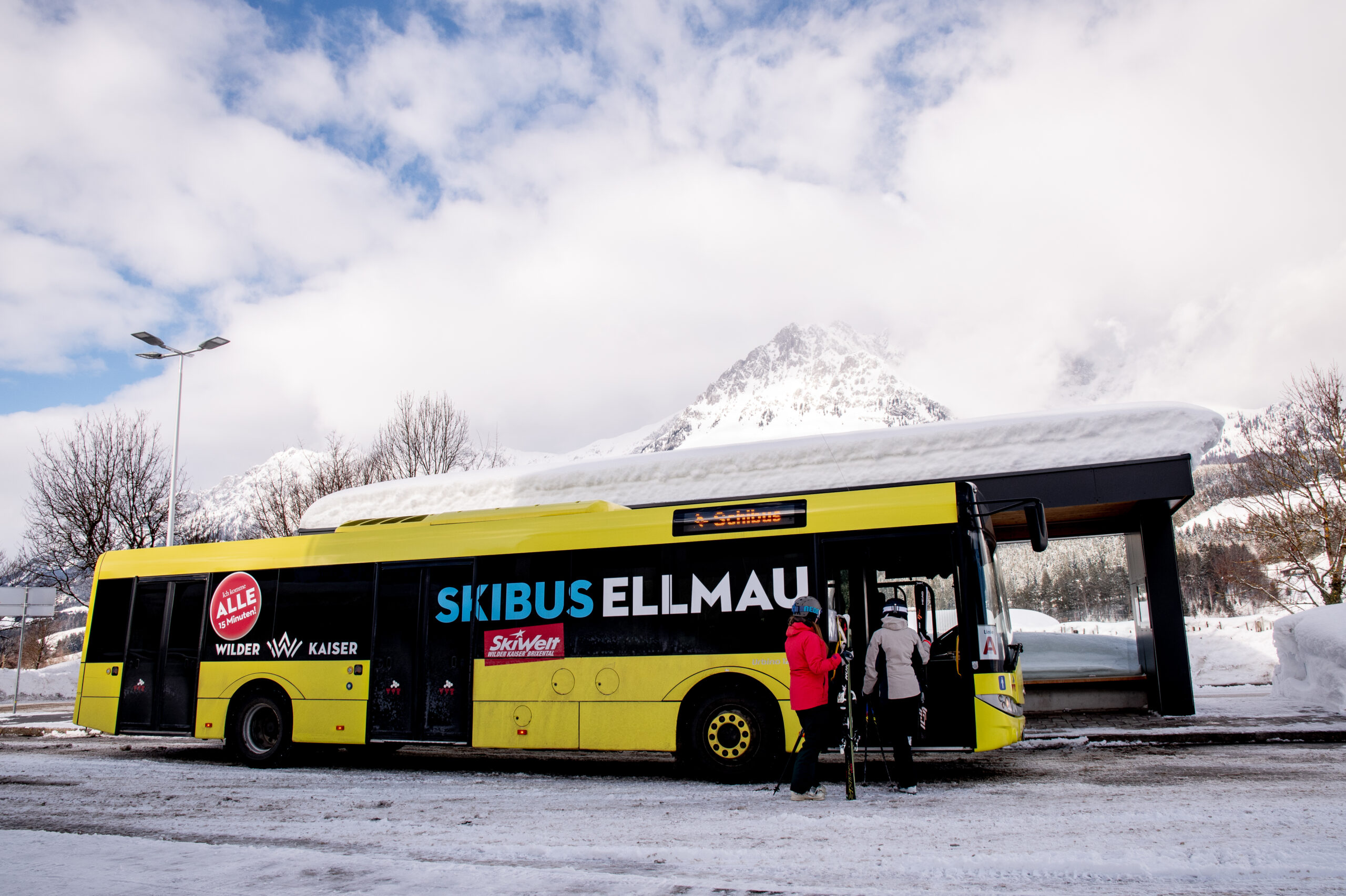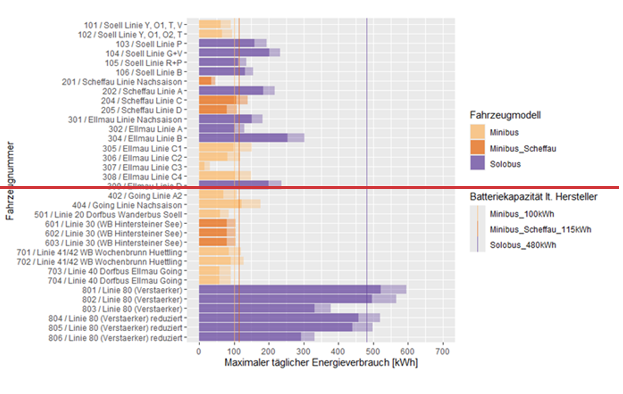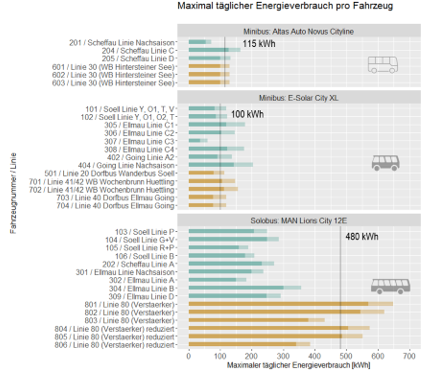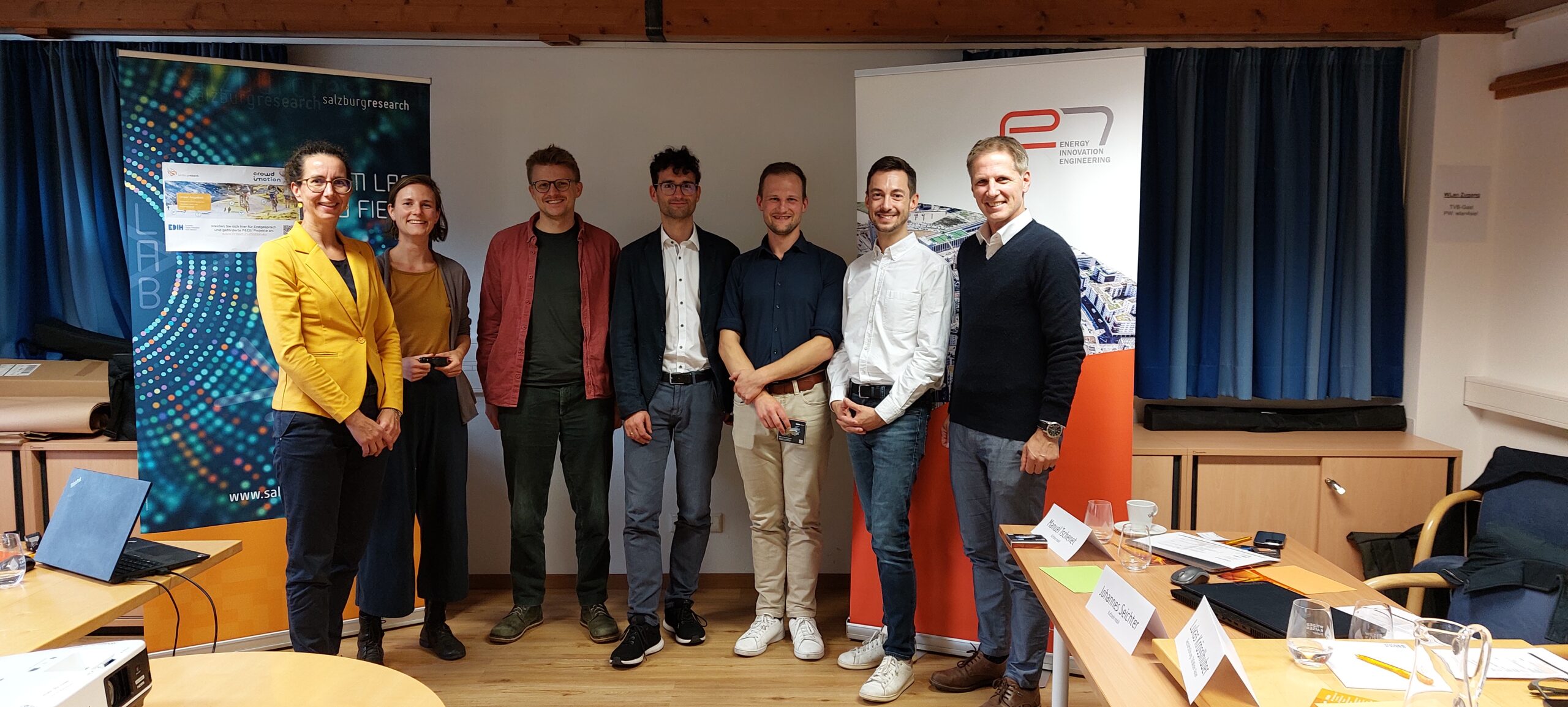Customer: Kufstein mobil eGen (Genossenschaft)
CiMo Partner: Salzburg Research Forschungsgesellschaft mbH
Challenge
The Wilder Kaiser tourism region is to be prepared for the use of sustainable and electric mobility offers. In the future, tourists are to be supported with sustainable mobility offers when getting to and from tourist destinations, such as the mountain railways or alpine natural areas, both in winter and summer. For this purpose, various scenarios are needed for the potential use of electric buses in ski and hiking bus transport in the Wilder Kaiser region.
The following aspects are analyzed and developed using the feasibility analysis:
- Recommendations for the selection of suitable e-buses for use in the Wilder Kaiser region
- Analysis and selection of potential routes for the use of e-buses
- Need and location of electric charging infrastructure in the Wilder Kaiser region (use of existing and/or construction of new charging infrastructure and/or synergistic use of energy communities) and economic or operational requirements (comparison of energy solutions; life cycle cost analysis for vehicles or charging infrastructure)

Methods
Salzburg Research used a scientific consumption model to estimate the energy consumption of e-buses on the defined routes. The starting data for determining the potential is real driving data (GNSS data) recorded on the routes in question in March and April 2024. After a quality check of the data, these were referenced to a street graph (GIP). In addition, assumptions required for the calculations were agreed upon together with the customer Kufstein mobil. These assumptions and the recorded data were used to develop the consumption model, which was then used to calculate several scenarios for the use of e-buses in the Wilder Kaiser region.
For the profitability calculation, a tool developed by e7 for dynamic present value calculation was used, which was set up in accordance with ÖNORM M 7140 (comparative business calculation for energy systems using dynamic calculation methods). Cost parameters were taken into account for both the e-buses and the charging infrastructure. These are broken down into investment (purchase of buses and hardware including funding, etc.), consumables (charging current or fuel) and operating resources (maintenance, insurance, network fee, etc.).
To collect data for the cost assumptions, interviews were conducted (bus company Ledermair, municipal services Steyr, municipal utilities Kufstein, TINetz) and assumptions were taken from comparable studies in the literature (Fraunhofer, Prognos, Sphera and many more). Regarding vehicles, direct discussions were held with providers of e-buses.


Result, Impact
Using the potential analysis, the maximum mileage per day and vehicle as well as the maximum daily energy consumption per vehicle were calculated for a total of 31 routes (divided into winter and summer routes). Based on this, a “maximum variant” (i.e. maximum load, high consumption due to additional consumers such as air conditioning, etc.) and a “normal variant” (average load, average consumption of additional consumers, etc.) were calculated. In addition, scenarios for charging the vehicles within the region or outside the region at a depot were also calculated. Different battery capacities of the e-buses were also taken into account. The results show which routes are feasible with one battery charge per day and for which routes an intermediate charge is required – each for the different scenarios.
In addition, a market overview of currently available e-bus models was provided, which can be used directly for procurement by bus companies. Alternative locations for the charging infrastructure and charging strategies (depot charging, opportunity charging) were developed, including the necessary charging power and other requirements. The first results of the profitability calculation show a present value comparison between diesel and electric buses. Depending on the assumptions, an economic advantage is expected in 7-17 years from investing in e-buses.
